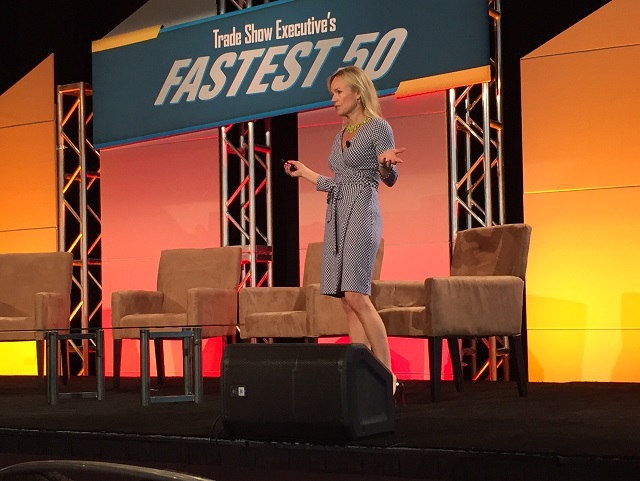
I recently had the honor of speaking at Trade Show Executive’s Fastest 50 program in Chicago.
The Program honors the Fastest 50 growing trade shows in North America in categories such as attendance growth (congrats to our own IBEX who was ranked #2!), exhibit sales, net square feet growth, etc.
My presentation discussed an exciting and highly relevant research approach we’ve been using known as attitudinal segmentation. I definitely think we are on to something — the morning’s featured keynote speaker discussed the same type of segmentation methodology, which he referred to as “nodes.” I appreciated the “lay-up” for my own presentation! Thanks Nicholas Webb.
So what is attitudinal segmentation? It’s quantitative, statistically reliable research that segments audiences on how they feel and what they need. Not what they do and how they do it. It identifies the why and groups audiences by differences in attitudes and purchase motivations, not demographic similarities.
Here’s an example:
There was a home fragrance manufacturer (candles, potpourris, diffusers) who was looking to figure out why they weren’t moving the needle on sales; why their ecommerce business was down, etc. It was a large national company that had a strong share in the category and they were well known for their fragrances and focused their marketing messages on fragrance. They decided to look more closely at their customer base and take a different approach to segmentation. Although the research looked at the customers buying all the same items, it turns out they were buying them for very different reasons.
The segments came back in three fairly equal-sized groups:
- Fragrance Lovers – Buy scented candles and potpourris to enhance the mood in their home. Fragrance is what matters most.
- Gifters – Buy candles for others; packaging takes precedence over fragrance. Brand and product presentation are more important than fragrance.
- Decorators – Buy to enhance the home décor. It’s all about the product aesthetic and how it looks in their home. Color and design were far more important than fragrance.
This company had a major wake-up call when they realized that two-thirds of their customers were not buying because of the fragrance!
AH HAH!
This insight is incredibly powerful for marketers. It completely shifted their entire marketing approach including messaging, SEO and PPC strategies, and content marketing. They could start talking about home decorating in their blogs, get more engagement from people using candles in their homes, and change their key words in paid and organic search. They also found out that the fragrance lover was not going to buy a candle if they couldn’t smell it – so the next direct mailer was a scratch’n sniff!
We all know effective marketing is all about being relevant. If we knew why our attendees did what they do, then we could do a much better job of positioning our events to meet their needs, to create experiences that connected to them on a more personal level, and present marketing messages in the most powerful light. We may also find out what else may interest them and develop new programs or engagement opportunities that align with those needs.
We can’t rely on demographics alone to tell this story. People make decisions based on what’s important to them. Even though people look the same on paper, they will often make purchases for very different reasons. This research has thrown many of my assumptions based on demographic data out the proverbial window.
As much as I love getting to the “why” and understanding how meaningful it is to our marketing strategies, it’s not a replacement for all of the rich demographic and behavioral research that we conduct. I think most of us feel a little guilty about the investment in the rich research and data that we aren’t always leveraging to its best use. Attitudinal Segmentation is built just for us and designed for immediate implementation to enhance marketing strategies and messaging platforms. The insights that come back are guaranteed to make any committed marketer’s mouth water.
We’ve had a great deal of success with attitudinal research and it definitely brings out the “ah hahs” from the clients. It’s helped us to effectively build a brand for a joint venture show launch by showing similarities in attitudes across different member groups that were assumed to be very different. It’s helped us position associations for growth in peripheral markets by tapping into the needs of those markets to effectively develop relevant benefits and programs. It’s helped us properly allocate marketing resources when we discovered that a significant portion of a primary list source would never come to the event. And that’s just scratching the surface.
In a world of one-to-one messaging, the better we know our audiences and their preferences, motivations, and needs, and how they feel about our events and events in general, the better chance we have at sustaining and growing attendance and enhancing the experience overall. Attitudinal segmentation will contribute significantly to your success.
Want to hear some more about it? Just send me a note or give me a call at pcardwell@csgcreative.com or 703.706.8223!
